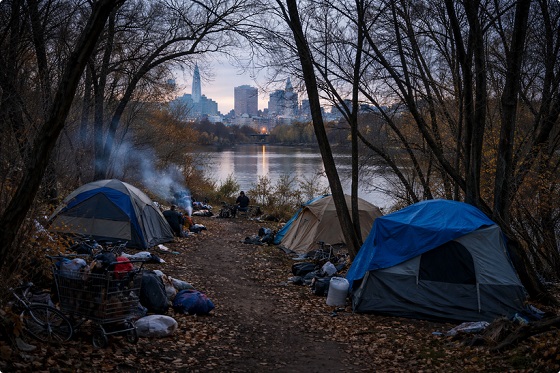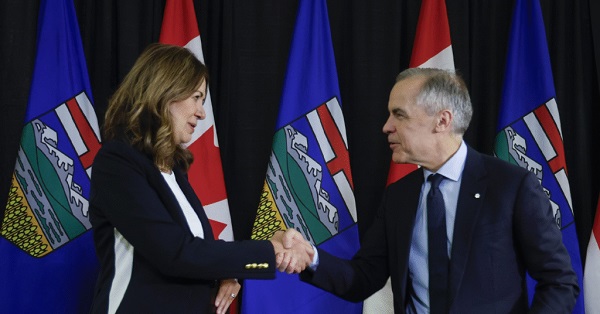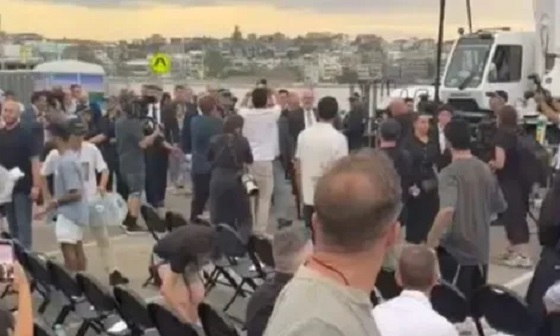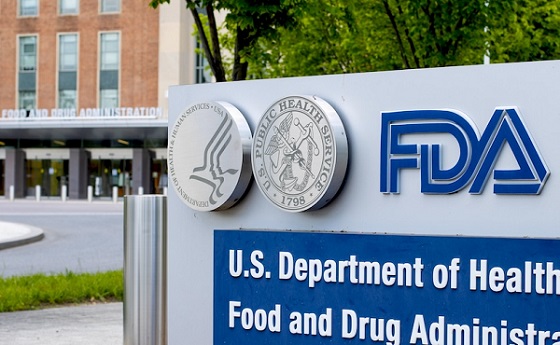Frontier Centre for Public Policy
UNDRIP’s false promise of Indigenous Nationhood threatens individual Indigenous Canadians

From the Frontier Centre for Public Policy
By Peter Best
All societies need to make use of force, both to preserve internal order and to protect themselves from external enemies. A liberal society does this by creating a powerful state, but then constraining that power under a rule of law. The state’s power is based on a social contract between autonomous individuals who agree to give up their rights to do as they please in return for the state’s protection. It is legitimated both by the common acceptance of the law, and, if it is a liberal democracy, through popular elections. Liberal rights are meaningless if they cannot be enforced by a state, which, by Max Weber’s famous definition, is a legitimate monopoly of force over a defined territory…Ultimate power, in other words, continues to be the province of national states, which means that control of this power at this level remains critical.
-Francis Fukuyama – Liberalism and its Discontents
Our Canadian elites, led by Justin Trudeau’s Liberal government, continue to advance the idea that Canada should be a race-based nation. This is reflected in the Trudeau government’s enactment of the racist United Nations Declaration on the Rights of Indigenous People (UNDRIP) laws and policies. (The UNDRIP Action Plan.)
These laws and policies are partly based on the premise that Indigenous peoples in Canada still have distinct cultures that give them the right to exist as separate groups within the Canadian nation, living parallel to the rest of Canadians, and only optionally being subject to the laws of Canada.
Under the heading “Cultural, religious and linguistic rights,” the UNDRIP Action Plan sets out the Trudeau government’s goal of creating a country where:
Indigenous peoples fully enjoy and exercise their distinct rights to maintain, control, develop, protect, and transmit their cultural heritage, indigenous knowledge, languages, food systems, sciences, and technologies, without discrimination…. Indigenous peoples are thriving, including through connection to culture and community, the use of their languages and the expression of their spiritual heritage.
Also, the UNDRIP Action Plan prescribes that these “distinct rights” are to be exercised and enhanced by treating “Indigenous peoples” as independent, self governing, “nations,” representing over 630 race-based nations existing within the boundaries of Canada.
The premise underlying the UNDRIP Action Plan is that authentic, pre-contact Indigenous cultures still exist, and that they have the right to be preserved at the expense of Canadian taxpayers. In other words, these nations will be dependent on other Canadians.
The last vestiges of authentic, distinct, pre-contact Indigenous cultures disappeared about 150 years ago. As Assembly of First Nations co-founder William Wuttunee wrote in 1971 in his book Ruffled Feathers: “Real Indian culture is just about dead on the reserves.” Now, over 50 years later, native traditional cultures have been replaced by re-imagined cultures, even if a declining few Indigenous people still speak their traditional languages.
There can be no going back to any part of Indigenous pre-contact cultures, nor would Indigenous peoples want to. In this respect, Iroquois writer Sachem Ely S. Parker says:
Do you know or can you believe that sometimes the idea obtrudes…whether it has been well that I have sought civilization with its bothersome concomitants and whether it would not be better even now…to return to the darkness and most sacred wilds (if any such can be found) of our country and there to vegetate and expire silently, happily and forgotten as do the birds of the air and the beasts of the field. The thought is a happy one but perhaps impracticable.
When trade with Europeans began in the early 1600’s, Indigenous peoples began the long, irreversible process of appropriating European goods and technologies, modern economic practices, Christianity, and Western norms and values, with the consequence that, by the late 19th century, their paleolithic, pre-contact cultures had become almost extinct.
All that remained was what William Wuttunee described as “touristy” and “museum pieces of buckskin and feathers,” the ceremonial remnants justly celebrated on special occasions but, less innocently, now used by their current leaders as symbolism in their endless political campaigns for more money and power.
Indigenous peoples cannot turn back from the modern, high-tech, globalist culture that is systematically enveloping all Canadians. In this respect, Yuval Noah Harari wrote in Sapiens:
Today almost all humans share the same geopolitical system (the entire planet is divided into internationally recognized states); the same economic system (capitalist market forces shape even the remotest corners of the globe); the same legal system (human rights and international law are valid everywhere, at least theoretically); and the same scientific system (experts in Iran, Israel, Australia, and Argentina have exactly the same views about the structure of atoms or the treatment of tuberculosis…. We still talk a lot about “authentic” cultures, but if by “authentic” we mean something that developed independently, and that consists of ancient local traditions free of external influences, then there are no authentic cultures left on earth. Over the last few centuries, all cultures were changed almost beyond recognition by a flood of global influences.
But ironically, the rise of globalism has counterintuitively led to the increase of parochial, tribalist feelings.
Historian Robert Kaplan, in his latest book The Loom of Time – Between Empire and Anarchy, From the Mediterranean to China, argues that the cultural shock caused by modernism and globalism–by their annihilation of traditional tribal life–has resulted in an emotionally compensating reaction on the part of those affected to “reinvent their primordial selves in more abstract and extreme forms in order to cope with impersonal settings,” and, in addition, to achieve worldly gains.
Kaplan explains that the anonymity and the loss of pride and identity on the part of tribal societies resulting from urbanization and other globalist influences led to the psychological need for a compensating, “emotional grounding,” which now manifests itself in intense, albeit fictional, assertions of political, ethnic, religious, and racial exceptionalism, and opportunistic demands for favored treatment by the state.
Ironically, the more modern, urban, and globally integrated the former pre-contact tribe becomes, the greater its “primordial” racial sentiments become and the greater and more inherently baseless are its ethnic or race-based claims to be favored by the state.
Pre-contact tribal cultures were relatively static and fatalistic. There was little belief in “progress,” human rights, money, wealth, or job creation. There was no belief that people had a right to material things like housing, education, medical care, constitutions, courts, judges, welfare, policing, or clean water. These are all modern Western ideas and practices that were inconceivable to pre-contact tribal cultures.
Kaplan writes:
Cultural consciousness is enhanced rather than submerged by modernization, because of the ability of modern states and societies to offer jobs, status, and other spoils for which individuals of different ethnic, religious and sectarian identities compete. Through education, modernization also makes people more aware of their collective pasts and their differences with other peoples. Such phenomena have been the forerunners to the identity politics of the post-modern era.
This is what has happened to Canadian Indigenous tribes.
Modernity, urbanization, and globalism, as William Wuttunee confirmed, have destroyed their pre-contact cultures and, as an ironic consequence, have led to abstract and entirely fantasy-based claims of present Indigenous cultural authenticity and “difference.” The more obvious it is that authentic pre-contact Indigenous cultures have vanished, the more their current Indigenous leaders opportunistically claim that they are alive and thriving.
The unprecedented, radical Indigenous political and legal demands now being routinely made by Indigenous groups are, in ironic fact, completely rooted in Western political ideas and practices.
Their demands for quasi- separatist “nation-to-nation” status, for veto powers over federal and provincial laws possibly affecting their “aboriginal rights and territories,” for reparations, for ownership stakes in resource projects and for co-management with the Crown of public lands and natural resources, are all demands that would be inconceivable to pre-contact Indigenous tribal cultures.
The Western philosophical nature of these demands is proof positive of the extinguishment of pre-contact Indigenous cultures.
Canadian Indigenous groups cannot form viable nation-states, and the UNDRIP Action Plan’s attempts to do this impossible task threatens the civic well being of individual Indigenous Canadians.
In referring to the endless squabbling between the various ethnic tribes that make up the many failed states of the Middle East and Africa, Kaplan reminds us that legitimate nation-states are more than artificial communities created by politics, as were the First Nations reserves in Canada. Rather, they are natural, “practical communities…entities of geographic and historical association.”
Kaplan also says that legitimate nation-states have hierarchical, coherent governing structures, and rules-based laws developed organically over time. They are supported by “organized bureaucratic systems interacting with each other on an impersonal, secular basis.”
None of these basic requirements of nationhood are present to any sufficient degree on First Nations reserves, which, as organized groups, are mostly strangers to the civic values, practices, and traditions of modern liberal democracies.
First Nations reserves, like the “institutionally flimsy” Arab and African tribal groups referred to by Kaplan, “have imported the fruits of science without as societies ever producing them themselves… They have experienced the West only as “things.” … They have possessed the techniques of Europe without intuiting the centuries-long cultural processes that had made the West what it was…”.
In other words, Indigenous tribal groups are “modern” only in the culturally appropriated material sense, and because of the Indian Act and the reserve system, they tend to be illiberal in their political culture and governing practices. The proposed Indigenous nation-states that are envisioned by the UNDRIP Action Plan will be, in Kaplan’s words, just as institutionally-flimsy as other failed states are.
This reality is at the core of the threat posed by the UNDRIP Action Plan to the civic well-being of individual Indigenous Canadians. In this regard Kaplan reminds us that: “…where institutions are weak then personalities…who milk and misgovern…perforce dominate.”
On Canadian Indigenous reserves, governance is prone to family-based self-dealing. (Kaplan’s phrase is “republics of cousins.”) There is no reason to believe that such governments will be better under the UNDRIP Action Plan. In fact, governance will probably get worse because, as Kaplan shows, tribalism and illiberalism are worsened when politically unprepared people achieve self-rule.
Indigenous lawyer and businessman, Calvin Helin, in his seminal book Dances With Dependency: Out of Poverty Through Self- Reliance, compares illiberal First Nations reserve governance to “banana republics.” He referred to Chiefs and Band Councils as “colonizers of their own disempowered people.”
Indigenous scholar Rob Louis adds:
What realistic chance do band members have against chief and council who control their money and resources? For many band members in Canada, the battle is not just with the Crown, it is also with their own leadership… Perhaps reconciliation within Indigenous communities needs to take place before reconciliation can happen with Canada.
Until recently, vulnerable, and powerless Indigenous Canadians had the federal and provincial governments, the courts, and human rights commissions to protect them. But that is no longer true. All these state institutions have shamefully abandoned their role of protectors of weak and vulnerable Indigenous Canadians.
The Supreme Court of Canada is just as much of a threat to the civic well-being of Indigenous Canadians as is the UNDRIP Action Plan.
In its Vuntut Gwitchin decision, purportedly to preserve Indigenous “difference,” the Court ruled that in the event of an irreconcilable conflict, a First Nations Band’s “collective rights,” resting on its right to protect “Indigenous difference,” will now prevail over an individual Indigenous Canadian’s rights as guaranteed by the Canadian Charter of Rights and Freedoms. As such, the Charter can now be effectively ignored by Band Councils, depriving countless Indigenous Canadians of Charter protection on their home reserves and territories.
The Vuntut Gwitchin First Nation (VGFN) is described by the Supreme Court as a “self-governing nation” in the Yukon comprising of about 560 “citizens,” only about 260 of whom live in the “main community” of Old Crow, which is the so-called “seat of government.” The other 300 odd “citizens” live mostly in Whitehorse, 800 kilometres south. There are no roads into Old Crow. Students cannot graduate from high school in that community, and there no adequate medical facilities in Old Crow.
Cindy Dickson, a VGFN citizen living in Whitehorse, claimed that a VGFN law that said that a “citizen” had to live in Old Crow to qualify to run for VGFN Council violated her Canadian Charter rights not to be discriminated against based on her residency.
She lost her case.
The Supreme Court asserted the existence of “Indigenous legal orders” that prevailed over Canadian law. There was an anti-discrimination provision in the 1993 VGFN Constitution. The Court told her to rely on that and “pursue a similar claim under the VGFN Constitution.”
The problem with this is that there is no VGFN court and no VGFN judge or lawyers. In fact, there is no VGFN institutional justice system whatsoever through which Cindy Dickson could pursue her claim. How could there be? VGFN, like most First Nations, is a mere tribal village, with a population so tiny that the creation of any such state institutions is impossible.
The Supreme Court knew this, and, to its discredit, preferred giving Ms. Dickson empty words over telling her the harsh truth that while she may have rights in the abstract, in VGFN because of its lack of institutions, she could not pursue those rights. A right without institutional support is, in fact, no right at all.
Another harsh truth that the Court avoided telling Ms. Dickson is that now, VGFN, like all Canadian First Nations, have been shamefully declared Charter-free zones by the Supreme Court of Canada. The Vuntut Gwitchin decision, along with the UNDRIP Action Plan, means that victims of corrupt or discriminatory First Nations reserve leadership practices will now have no one to turn to for protection and relief.
In fact, the Vuntut Gwitchin decision illustrates the absurdity of the Indigenous nation-state pretensions of the Canadian UNDRIP Action Plan.
The joint efforts of the Supreme Court and the federal government’s UNDRIP Action Plan have made individual Indigenous Canadians, in terms of having the guaranteed protection of the rule of law, effectively unprotected on their new, UNDRIP “nation-state” reserves.
Robert Kaplan writes a great deal about the multi-ethnic, multi-racial empires, the most generic form of governance in world history, where the strong hand of the emperor kept order and protected vulnerable minorities from the depredations of majorities. He cites the example of the Ottoman empire, where, with its breakup, the strong power of the sovereign in those territories was lost. Power was then transferred to tribalistic ethnic and religious groups that have little regard for the rights of minorities. This has resulted in over a century of anarchic tribal, ethnic and religious persecution and warfare in the Middle East.
Since Confederation, Canada has protected powerless and vulnerable Indigenous people from the mainly illiberal governance systems that are typical of First Nations reserves. Now, the Canadian state is abandoning this protective role. By doing so Canada is betraying the vast majority of powerless and vulnerable Indigenous Canadians, leaving them defenceless against the power and potential injustice of their tribal leaders.
What has happened echoes Frances Fukuyama’s warning that rights are meaningless unless they are created and can be enforced by a powerful state. The UNDRIP Action Plan and the Supreme Court’s rulings like Vuntut Gwitchin will not create viable and strong Indigenous nation-states. All they will do is weaken the Canadian state, causing harm to all Canadians and depriving the vast majority of vulnerable, powerless Indigenous Canadians of the protective rule of Canadian law.
Peter Best is a retired Sudbury lawyer. He is the author of There Is No Difference – An Argument for the Abolition of the Indian Reserve System and Special Race-based Laws and Entitlements for Canada’s Indians.
Frontier Centre for Public Policy
Tent Cities Were Rare Five Years Ago. Now They’re Everywhere

From the Frontier Centre for Public Policy
Canada’s homelessness crisis has intensified dramatically, with about 60,000 people homeless this Christmas and chronic homelessness becoming entrenched as shelters overflow and encampments spread. Policy failures in immigration, housing, monetary policy, shelters, harm reduction, and Indigenous governance have driven the crisis. Only reversing these policies can meaningfully address it.
Encampments that were meant to be temporary have become a permanent feature in our communities
As Canadians settle in for the holiday season, 60,000 people across this country will spend Christmas night in a tent, a doorway, or a shelter bed intended to be temporary. Some will have been there for months, perhaps years. The number has quadrupled in six years.
In October 2024, enumerators in 74 Canadian communities conducted the most comprehensive count of homelessness this country has attempted. They found 17,088 people sleeping without shelter on a single autumn night, and 4,982 of them living in encampments. The count excluded Quebec entirely. The real number is certainly higher.
In Ontario alone, homelessness increased 51 per cent between 2016 and 2024. Chronic homelessness has tripled. For the first time, more than half of all homelessness in that province is chronic. People are no longer moving through the system. They are becoming permanent fixtures within it.
Toronto’s homeless population more than doubled between April 2021 and October 2024, from 7,300 to 15,418. Tents now appear in places that were never seen a decade ago. The city has 9,594 people using its shelter system on any given night, yet 158 are turned away each evening because no beds are available.
Calgary recorded 436 homeless deaths in 2023, nearly double the previous year. The Ontario report projects that without significant policy changes, between 165,000 and 294,000 people could experience homelessness annually in that province alone by 2035.
The federal government announced in September 2024 that it would allocate $250 million over two years to address encampments. Ontario received $88 million for ten municipalities. The Association of Municipalities of Ontario calculated that ending chronic homelessness in their province would require $11 billion over ten years. The federal contribution represents less than one per cent of what is needed.
Yet the same federal government found $50 billion for automotive subsidies and battery plants. They borrow tonnes of money to help foreign car manufacturers with EVs, while tens of thousands are homeless. But money alone does not solve problems. Pouring billions into a bureaucratic system that has failed spectacularly without addressing the policies that created the crisis would be useless.
Five years ago, tent cities were virtually unknown in most Canadian communities. Recent policy choices fuelled it, and different choices can help unmake it.
Start with immigration policy. The federal government increased annual targets to over 500,000 without ensuring housing capacity existed. Between 2021 and 2024, refugees and asylum seekers experiencing chronic homelessness increased by 475 per cent. These are people invited to Canada under federal policy, then abandoned to municipal shelter systems already at capacity.
Then there is monetary policy. Pandemic spending drove inflation, which made housing unaffordable. Housing supply remains constrained by policy. Development charges, zoning restrictions, and approval processes spanning years prevent construction at the required scale. Municipal governments layer fees onto new developments, making projects uneconomical.
Shelter policy itself has become counterproductive. The average shelter stay increased from 39 days in 2015 to 56 days in 2022. There are no time limits, no requirements, no expectations. Meanwhile, restrictive rules around curfews, visitors, and pets drive 85 per cent of homeless people to avoid shelters entirely, preferring tents to institutional control.
The expansion of harm reduction programs has substituted enabling for treatment. Safe supply initiatives provide drugs to addicts without requiring participation in recovery programs. Sixty-one per cent cite substance use issues, yet the policy response is to make drug use safer rather than to make sobriety achievable. Treatment programs with accountability would serve dignity far better than an endless supply of free drugs.
Indigenous people account for 44.6 per cent of those experiencing chronic homelessness in Northern Ontario despite comprising less than three per cent of the general population. This overrepresentation is exacerbated by policies that fail to recognize Indigenous governance and self-determination as essential. Billions allocated to Indigenous communities are never scrutinized.
The question Canadians might ask this winter is whether charity can substitute for competent policy. The answer is empirically clear: it cannot. What is required before any meaningful solutions is a reversal of the policies that broke it.
Marco Navarro-Genie is vice-president of research at the Frontier Centre for Public Policy and co-author with Barry Cooper of Canada’s COVID: The Story of a Pandemic Moral Panic (2023).
Agriculture
The Climate Argument Against Livestock Doesn’t Add Up

From the Frontier Centre for Public Policy
Livestock contribute far less to emissions than activists claim, and eliminating them would weaken nutrition, resilience and food security
The war on livestock pushed by Net Zero ideologues is not environmental science; it’s a dangerous, misguided campaign that threatens global food security.
The priests of Net Zero 2050 have declared war on the cow, the pig and the chicken. From glass towers in London, Brussels and Ottawa, they argue that cutting animal protein, shrinking herds and pushing people toward lentils and lab-grown alternatives will save the climate from a steer’s burp.
This is not science. It is an urban belief that billions of people can be pushed toward a diet promoted by some policymakers who have never worked a field or heard a rooster at dawn. Eliminating or sharply reducing livestock would destabilize food systems and increase global hunger. In Canada, livestock account for about three per cent of total greenhouse gas emissions, according to Environment and Climate Change Canada.
Activists speak as if livestock suddenly appeared in the last century, belching fossil carbon into the air. In reality, the relationship between humans and the animals we raise is older than agriculture. It is part of how our species developed.
Two million years ago, early humans ate meat and marrow, mastered fire and developed larger brains. The expensive-tissue hypothesis, a theory that explains how early humans traded gut size for brain growth, is not ideology; it is basic anthropology. Animal fat and protein helped build the human brain and the societies that followed.
Domestication deepened that relationship. When humans raised cattle, sheep, pigs and chickens, we created a long partnership that shaped both species. Wolves became dogs. Aurochs, the wild ancestors of modern cattle, became domesticated animals. Junglefowl became chickens that could lay eggs reliably. These animals lived with us because it increased their chances of survival.
In return, they received protection, veterinary care and steady food during drought and winter. More than 70,000 Canadian farms raise cattle, hogs, poultry or sheep, supporting hundreds of thousands of jobs across the supply chain.
Livestock also protected people from climate extremes. When crops failed, grasslands still produced forage, and herds converted that into food. During the Little Ice Age, millions in Europe starved because grain crops collapsed. Pastoral communities, which lived from herding livestock rather than crops, survived because their herds could still graze. Removing livestock would offer little climate benefit, yet it would eliminate one of humanity’s most reliable protections against environmental shocks.
Today, a Maasai child in Kenya or northern Tanzania drinking milk from a cow grazing on dry land has a steadier food source than a vegan in a Berlin apartment relying on global shipping. Modern genetics and nutrition have pushed this relationship further. For the first time, the poorest billion people have access to complete protein and key nutrients such as iron, zinc, B12 and retinol, a form of vitamin A, that plants cannot supply without industrial processing or fortification. Canada also imports significant volumes of soy-based and other plant-protein products, making many urban vegan diets more dependent on long-distance supply chains than people assume. The war on livestock is not a war on carbon; it is a war on the most successful anti-poverty tool ever created.
And what about the animals? Remove humans tomorrow and most commercial chickens would die of exposure, merino sheep would overheat under their own wool and dairy cattle would suffer from untreated mastitis (a bacterial infection of the udder). These species are fully domesticated. Without us, they would disappear.
Net Zero 2050 is a climate target adopted by federal and provincial governments, but debates continue over whether it requires reducing livestock herds or simply improving farm practices. Net Zero advocates look at a pasture and see methane. Farmers see land producing food from nothing more than sunlight, rain and grass.
So the question is not technical. It is about how we see ourselves. Does the Net Zero vision treat humans as part of the natural world, or as a threat that must be contained by forcing diets and erasing long-standing food systems? Eliminating livestock sends the message that human presence itself is an environmental problem, not a participant in a functioning ecosystem.
The cow is not the enemy of the planet. Pasture is not a problem to fix. It is a solution our ancestors discovered long before anyone used the word “sustainable.” We abandon it at our peril and at theirs.
Dr. Joseph Fournier is a senior fellow at the Frontier Centre for Public Policy. An accomplished scientist and former energy executive, he holds graduate training in chemical physics and has written more than 100 articles on energy, environment and climate science.
-

 International2 days ago
International2 days agoGeorgia county admits illegally certifying 315k ballots in 2020 presidential election
-

 Energy1 day ago
Energy1 day agoThe Top News Stories That Shaped Canadian Energy in 2025 and Will Continue to Shape Canadian Energy in 2026
-

 Business2 days ago
Business2 days agoSome Of The Wackiest Things Featured In Rand Paul’s New Report Alleging $1,639,135,969,608 In Gov’t Waste
-

 Alberta2 days ago
Alberta2 days agoCalgary’s new city council votes to ban foreign flags at government buildings
-

 International1 day ago
International1 day ago$2.6 million raised for man who wrestled shotgun from Bondi Beach terrorist
-

 Alberta1 day ago
Alberta1 day agoOttawa-Alberta agreement may produce oligopoly in the oilsands
-

 Frontier Centre for Public Policy6 hours ago
Frontier Centre for Public Policy6 hours agoTent Cities Were Rare Five Years Ago. Now They’re Everywhere
-

 Alberta2 days ago
Alberta2 days agoA Christmas wish list for health-care reform



